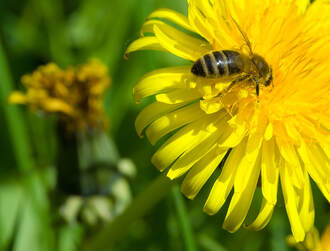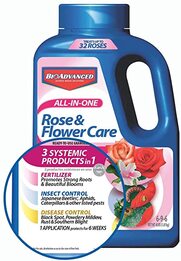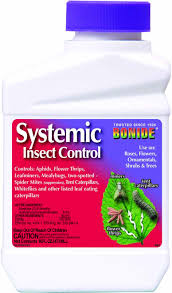Every day can be Earth Day!
Help clean up the banks of a stream or a beach that ‘somehow’ collects trash. Find and pull, cut down (or dig out as appropriate) invasive plants that have taken over native plants.
Plant Massachusetts natives
to provide the food needed by native birds, bees and butterflies. Not sure where to find them or what to plant? Check out
Grow Native Massachusetts or Native Plant Finder
Help clean up the banks of a stream or a beach that ‘somehow’ collects trash. Find and pull, cut down (or dig out as appropriate) invasive plants that have taken over native plants.
Plant Massachusetts natives
to provide the food needed by native birds, bees and butterflies. Not sure where to find them or what to plant? Check out
Grow Native Massachusetts or Native Plant Finder
Bees!

by HWGC member, Gretel Clark
You may know about honey bee colonies—that by mid-summer they number up to 60,000, that they have a few dozen drones and just one queen whom they feed, bring water to, remove her poop while she is laying somewhere between 1500 and 2,000 eggs each day. You may also know that a colony of honey bees is a complete society with specialized female workers feeding the young, building and cleaning cells, guarding the entrance, dragging out intruders, removing the dead, ventilating or heating as needed, moving around stores from cell to cell, curing the nectar — all this according to their age. When they reach 3 weeks of age, they (all females, remember) become field bees — the ones you see on your flowers and in your gardens, tasked with finding and collecting nectar and pollen, and bringing in propolis to strengthen their comb, sanitize and shellac their hive’s surfaces and glue every possible moving part. (Of course, we all know that the drones just lola round waiting to be fed, watching the worker bees work, and on sunny days, fly out to drone yards where they hang out with their buddies hoping a virgin queen will fly by providing them with the opportunity to not only inseminate her, but to DIE in the act of doing so!! Ta daaaa!! (This is definitely a feminist activity.) But, what I bet you don’t know, or haven’t even thought about, is why roughly half of their number decide on a sunny May or June morning to leave home and go hang like a wind socket from the branch of a tree. And then after a few hours or even a day, how is it that, simultaneously, all, in a virtual cloud, head with purpose for a new place to live! And how was this new place found? How, from among many possible alternate places did they decide on which one to go for? How do they know their way? And how do they manage to stay together as a single cloud? |
from the Honeybee Conservancy . . .
To help bees, it's best to have plants that attract bees blooming through the seasons. However, remember to avoid using any insecticides, herbicides, or pesticides, even organic ones. Springtime blooms: - pansies - snowdrops Summertime blooms: - peony - milkweed - bee balm - lavender - phlox - zinnias - marigold - goldenrod - chives late Summer/Fall - liatris - mint - sage - nasturtium - black-eyed susans - borage - thyme - oregano to learn more, go to: thehoneybeeconservancy.org |
Identifying & Avoiding Neonicotinoids
|
by HWGC member, Gretel Clark
If you have a supply of insect repellant containers in your garden shed, review them carefully to be sure that they are not Neonicotinoids, that are deadly poisonous to honey bees. Here are some of the more common pesticides that carry one of the many “neonic” chemicals: Imidacloprid, Clothianidin, Dinotefuran, Acetamiprid, Thiamethoxam. The first, Imidacloprid, is the most common. It will help us save our honey bees, if you promptly throw them all out! Here is a list that Corliss has posted alerting you as to the pesticides that carry Imidacloprid: Bayer products: • 3-in-1 Insect disease and Mite Control • 3-in-1 Tree and Shrub Plant Stater . . . throw packs • 2-in-1 Insect Control Plus Fertilizer Plant Spikes • All-in-One Rose/Flower Care (32 oz. concentrate & 4# granular) • 2-in-1 Systemic Rose and Flower Care (5# & 10# jugs/granular) • Complete Brand Insect Killer for Soil & Turf (ready-to-spray & lawn granules) • Season Long Grub Control – lawn granules Bonide products: • Annual Tree and Shrub Insect Control (quart & gallon concentrate) • Insect & Grub Control (granular for lawns & gallon concentrate) • Annual Grub Beater (lawn granules) • Systemic Granules Insect Control (1# & 4#) • Systemic Houseplant (8 oz. granular) A beekeeping friend of mine has advised: A beekeeping friend of mine has advised: “In my garden, I use BT (Dipel is the product name; you can buy from Johnny's Seeds), Neem oil, insecticidal soap, horticultural oil, and sulfur (for fungus). . . ” Finally, you are probably aware that Round Up has been found to be a carcinogen, a cancer-causing poison—toxic not only to beneficial insects and your soil, but also humans. Happy gardening & thanks for helping save our honey bees. |

Hamilton-Wenham Garden Club, PO Box 2035, South Hamilton MA 01982 | Contact us | follow us at





